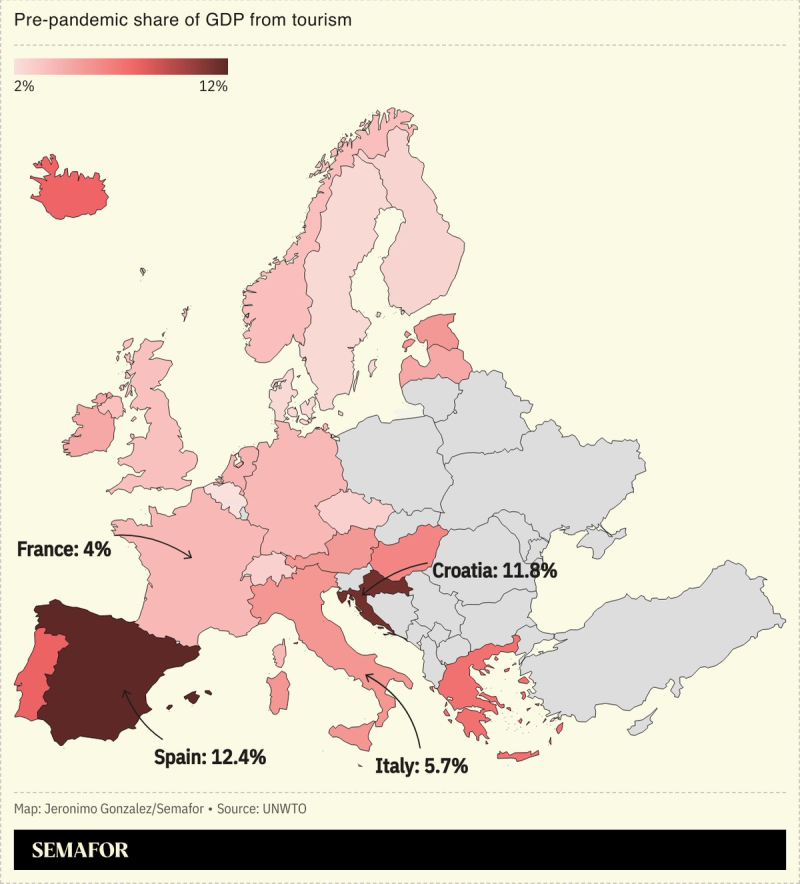The News
Europe attracted 709 million international visitors last year, and more are expected this year.
But across the continent, protests against tourists are gathering momentum: Visitors to Barcelona were set upon by locals armed with water pistols and chased off restaurant terraces earlier this month, an Instagram-famous beach on the island of Mallorca was “occupied” by locals cosplaying as tourists in hotel-style bathrobes in June, and Greece has witnessed a surge in anti-tourist graffiti, vandalism, and arson.
Ultimately, the “patience of locals has snapped,” the Financial Times reported.
SIGNALS
Efforts to limit tourist numbers seem to have failed
In April, Venice — which the United Nations’ culture agency last year recommended be listed as an “endangered” World Heritage Site, partly due to the impact of mass tourism — introduced a €5 ($5.50) daily fee for visiting during peak times, but it has raised much more money than anticipated, leading critics to say the policy hasn’t meaningfully reduced numbers, The New York Times reported. Meanwhile, Amsterdam has also tried a “stay away” campaign aimed at heavy-drinking British tourists that also didn’t work well, the Financial Times noted.
Locals feel left out of the tourism dividend
Tourism is the “economic lifeblood” for many of the places that are now seeing local protests, the Financial Times noted. But the problem may be less to do with tourism in itself, and more to do with how cities and resorts are being “operationalised to serve tourists” over the local population, an urban planner who works in Barcelona and Athens said. “The discussion isn’t really about the right kind of tourist, it is about how local people benefit from tourism,” a tourism expert told the BBC. “If locals can make a good living from it… then there can be a healthy coexistence for both,” he argued.

Sustainable tourism could offer an alternative
Sustainable tourism focuses on managing communities rather than destinations, by involving locals in decision-making, a tourism expert argued in The Conversation. But in some hotspots, like areas of natural beauty and historical sites, often do suffer from overtourism, which risks destroying the very features that made them attractive to visit, The Observer argued in an editorial. That endangers the people and the place’s “cultural soul,” the director of a sustainable travel company told Axios.



